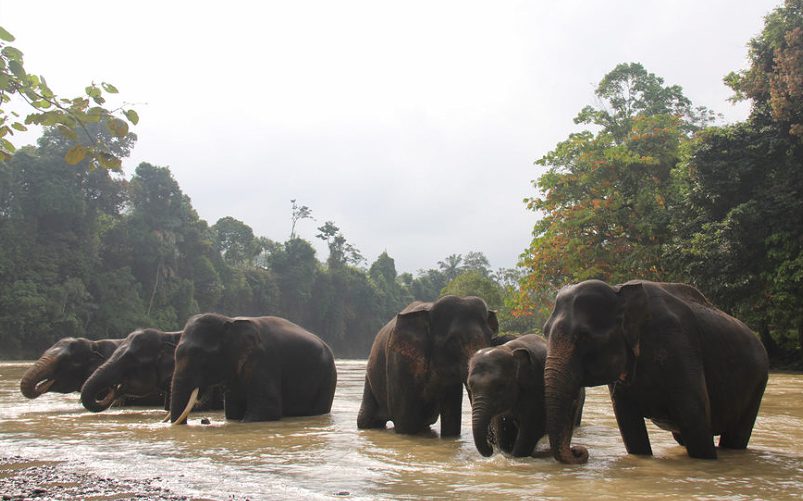EXAMINE THE EFFECTIVENESS OF HUMAN-ELEPHANT CONFLICT MITIGATION PROGRAM IN ACEH JAYA

-
Date:
30 Apr 2020 -
Author:
KEHATI
Human-elephant conflict always happened every year in Aceh. There are always cases that cause causalities from either human or elephant, such as the death of the elephant from the traps or toxin and damage to the farmland. Broken housing and human victim also happened because of the elephants’ rage. The trigger of the conflicts is not only about the people’s perception that thinks elephant as a pest, but it is also about the hunt for the ivory.
According to the Balai Konservasi Sumberdaya Alam (BKSDA) Aceh, along 2012-2017, there were 68 deaths of elephants, 55 of them (81%) were caused by the conflict with human. Besides the death of the elephants, those conflicts also causing at least 11 people injured and eight people died. The human-elephant conflict that always increases every year in Aceh causing a decrease to the elephant population from around 800 in 2003 to 500-535 in 2015. If those conflicts are still there, the Elephant population in Aceh will be extinct in the next 30-40 years. To prevent that, CRU, one of the TFCA-Sumatera grantee in Aceh make a serious effort to reducing human-elephant conflicts with the initiative of building barriers in the forest edge that connected with the natural barrier. Therefore, the elephant will not move out of the forest.
In Aceh Jaya, there are two barriers with 1.400 m long trenches and 245 m electric fences. Those barriers only placed in some places that have no natural barrier. According to Wahdi Azmi, the placement of the barriers will add the conflict mitigation strategies of human-elephant conflict in Aceh Jaya. The settlement of the conflict cannot be done with only a single solution, but the preventive effort is also encouraged so that we can reduce the threats for the population.
In one of the discussions, Sapto Aji Prabowo, the head of BKSDA said that the wild elephant population more located in the forest area under the management of Dinas Kehutanan and even in APL with the HGU for the private sector. “Aceh Jaya is one of the unique examples, where there is not any conservation area under the BKSDA, but we have a significant number of elephant,” he said. That is the challenge for elephant management in Aceh Jaya. A collaboration between BKSDA Aceh, KPH Wilayah I, and CRU with the support of TFCA Sumatera is forming. With that collaboration, the human-elephant conflict hopefully decreasing and people could live together with the animals that once was respected with the “Po Meurah” nickname. (Iwn)
